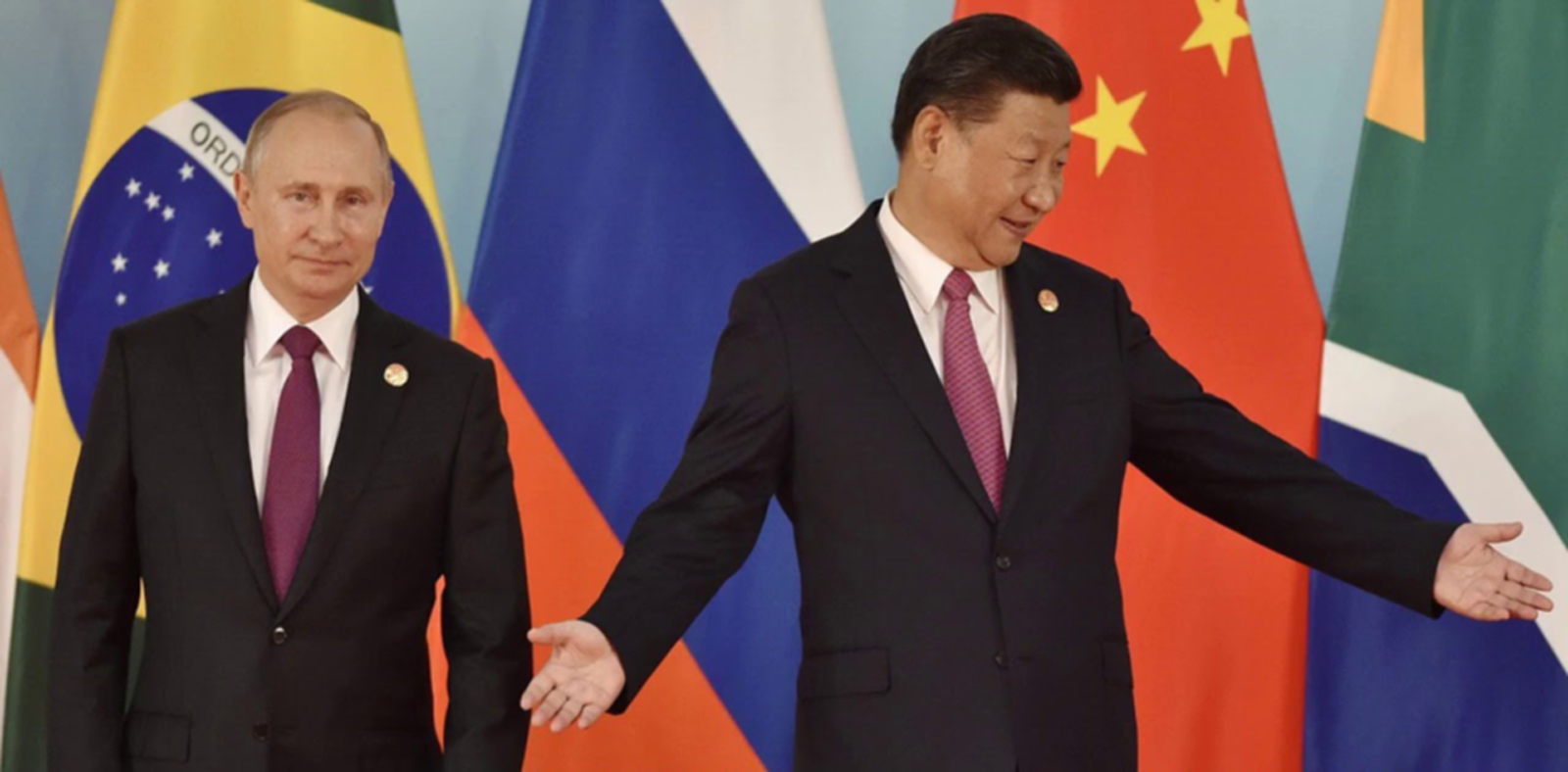Sixty years ago this fall, the Soviet Union shocked the world by launching into orbit Earth’s first artificial satellite, Sputnik 1. The beach ball-sized spacecraft was an astounding scientific achievement, one previously thought beyond the reach of Moscow. As Sputnik circled the globe and emitted radio signals detectable by anyone with a short-wave receiver, the American public experienced a crisis of confidence over their country’s standing in the world and its Cold War competitiveness.
We know the rest of the story. American scientists and policymakers were shaken out of the complacent assumption that their technological edge was insurmountable. American government, universities, and industry mobilized for a competition of scientific innovation and won.
In recent months, China has quietly given the United States a series of new “Sputnik Moments”not as dramatic as a radio beacon from overhead, but just as significant as a challenge to American technological leadership.
And as U.S. debates have focused on trade deficits and recovering manufacturing jobs, Beijing has achieved the scientific and technological feats that herald its arrival as an innovation superpower. These “Sputnik Moments” extend across multiple industries, from communications technology to renewable energy. Collectively, they pose a risk to America’s future economic dynamism, as well as its military superiority.
This August, China successfully tested the world’s first quantum satellite communication relying on the physics of quantum entanglement to send and receive provably secure messages. While the United States faces a regulatory morass around the world-shaking potential of CRISPR gene editing technologies, China last year announced seven human trials to treat cancer and other ailments.
As coal finds itself again at the center of the American energy policy debate, China’s photovoltaic capacity has surged. In just the first six months of 2017, China added new solar energy generation capacity equal to half of the United States’ entire installed solar base at the end of 2016.
These largely overlooked “Sputnik Moments” have thus far failed to galvanize a U.S. response. In fact, they underscore the need for action to sustain America’s innovation edge. Improving the quality of the U.S. education system and ensuring sufficient government funding for long-term research and development is essential, but will only succeed if the United States simultaneously addresses China’s sweeping and ambitious effort to acquire U.S. technology.
Unlike during the Cold War, today cutting-edge technology development in the United States occurs largely in the commercial sector, and often through cross-border collaboration. This means that technology breakthroughs in the United States can benefit economic competitors for example, China has built on CRISPR gene editing, which was invented in the United States.
Indeed, Beijing has in recent years benefitted from acquiring U.S. intellectual property to leapfrog traditional research and development costs and timelines. Although the threat of illegal Chinese cyber theft is well known, China is also employing a variety of tools designed to extract U.S. achievements in innovation without having to break any laws or firewalls.
These tools range from coercive trade practices to structured corporate finance. For example, in exchange for access to China’s massive and fast-growing market, Beijing has required some U.S. companies to trade away their intellectual property or engage in forced joint ventures with local Chinese firms. These shotgun corporate marriages can be little more than involuntary technology transfers imposed on U.S. companies seeking new sources of growth.
In the United States, China has adopted less heavy-handed tactics. Its companies are attempting to acquire U.S. firms in key advanced technology sectors like semiconductor development and manufacturing. Chinese corporations have also opened research centers in the United States to tap American talent, and made early-stage investments in American startups focused on cutting-edge technologies like artificial intelligence and robotics. A small Silicon Valley venture might find access to their intellectual property a minor price to pay for a game-changing capital infusion.
Failing to address China’s efforts to acquire U.S. technology will have far-reaching consequences. The Commission on the Theft of American Intellectual Property estimates that piracy, theft, and counterfeiting by China costs the U.S. economy between $225 billion and $600 billion a year, or up to 3 percent of the entire U.S. GDP. In the long term, the costs only grow more daunting.
If scientific advances in quantum communications, artificial intelligence, biotechnology energy, and battery technology increasingly move to China, so will the future industries and jobs that will accompany them. Moreover, future U.S. military advantage depends on America’s continued technological leadership. If China outpaces the United States in innovation, loss of America’s military edge in the Asia-Pacific, if not globally, could follow.
Much has been made of U.S. efforts to combat cyber-enabled Chinese economic espionage, including the 2015 agreement concluded by the Obama Administration. But leaving aside illegal cyber theft, China can exploit many legal vehicles to acquire U.S. technology. As a result, the United States may treat this problem differently than traditional industrial espionage.
This starts with changing how the U.S. government organizes for economic competition. As currently structured, the Committee on Foreign Investment in the United States (CFIUS), a body set up to review foreign investments for national security consequences, is not equipped for the task. CFIUS lacks the resources for its current caseload, and overly focuses on individual transactions rather than larger trends. Smaller transactions like those early investments in cutting-edge startups fall below the radar.
In many ways, the U.S. government’s current organization for economic competition replicates many of the failures that plagued counterterrorism efforts prior to the September 11th attacks. Expertise, authorities, and information are diffused across the government. This precludes a strategic approach, creates dangerous bureaucratic seams, and hinders swift action to counter a fluid and evolving challenge.
For these reasons, the United States should consider establishing a National Economic Competition Center (NECC) modeled after the National Counterterrorism Center (NCTC). Established in the years following the September 11thattacks, the NCTC was built on the premise that terror threats require swift cooperation across the U.S. government and with a level of information sharing that could not occur absent a centralized, dedicated effort. Like combatting terrorism, safeguarding technological security requires cutting across bureaucratic lines and will depend on both domestically- and internationally-oriented agencies.
An effective National Economic Competition Center, like the NCTC, would convene key players from relevant agencies such as the Departments of Defense, Commerce, and Treasury, along with the U.S. Trade Representative, the Federal Bureau of Investigations, and the rest of the intelligence community. It would pool information from across the government, and leverage big data to track Chinese efforts to acquire U.S. technology.
The National Economic Competition Center would also play a decisive role in CFIUS. Possessing the best sight picture on China’s economic activities, it would review CFIUS recommendations involving Chinese firms and wield a veto over decisions by the current membership.
The NECC would also recommend technologies requiring additional scrutiny by CFIUS, and in cases involving Chinese companies, monitor compliance with CFIUS mitigation agreements, which commit parties in a transaction to taking special actions to address national security concerns.
A National Economic Competition Center could also serve as a repository for pooling information from firms targeted by China’s efforts to acquire their intellectual property. It could function as a one-stop resource for companies under pressure by China to trade away their intellectual property, and recommend policy actions to give U.S. companies the backing they need.
In addition, the director of the NECC would regularly meet with technology industry CEOs and Silicon Valley venture capitalists to ensure the U.S. government strikes the right balance between protecting America’s technology edge and maintaining the level of openness required for the U.S. innovation ecosystem to thrive.
Recalling that U.S.-Soviet technological rivalry contributed to the modern age through space exploration, materials science, and advanced computing, the United States should boldly embrace economic competition with China. Now is the time to organize to win. The alternative is to continue on the present course one in which China leverages America’s technology to ultimately become the world leader in innovation.







